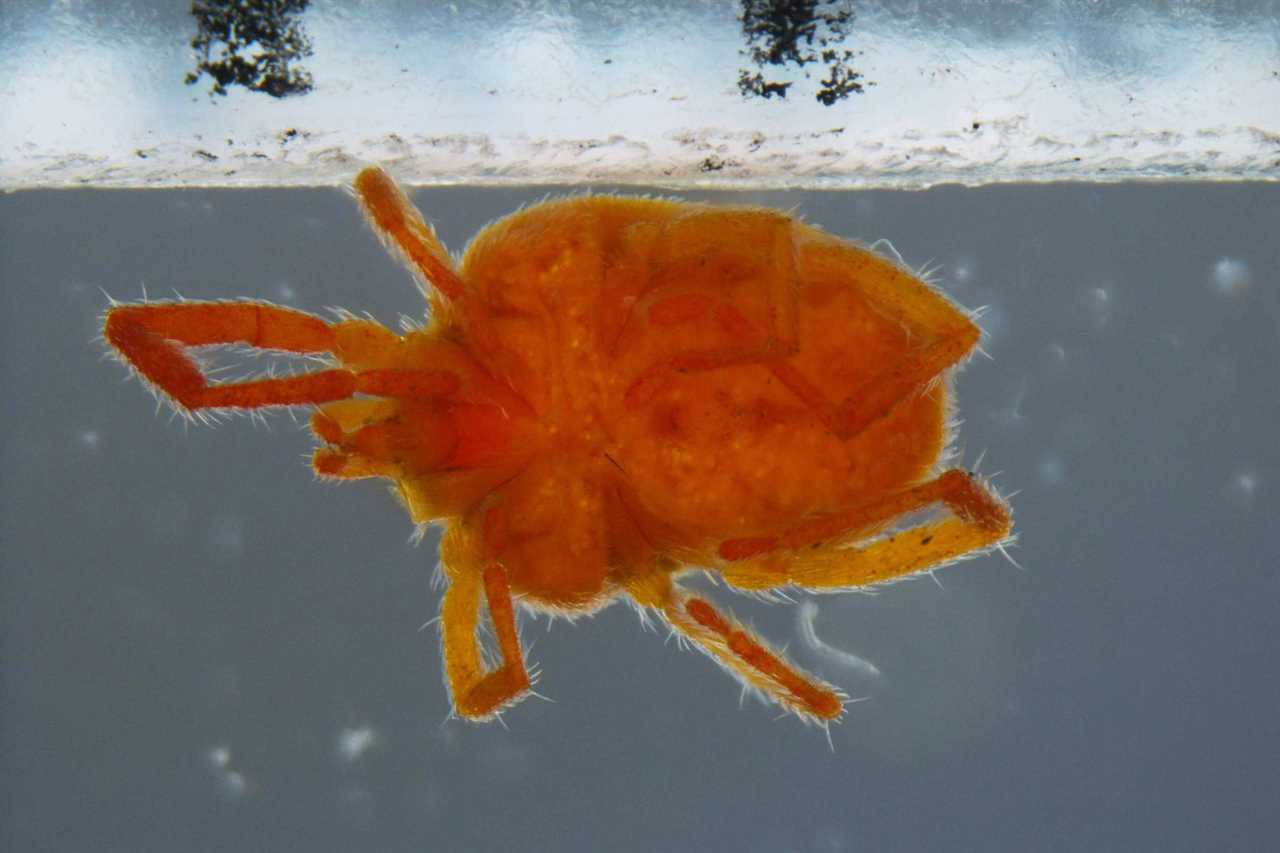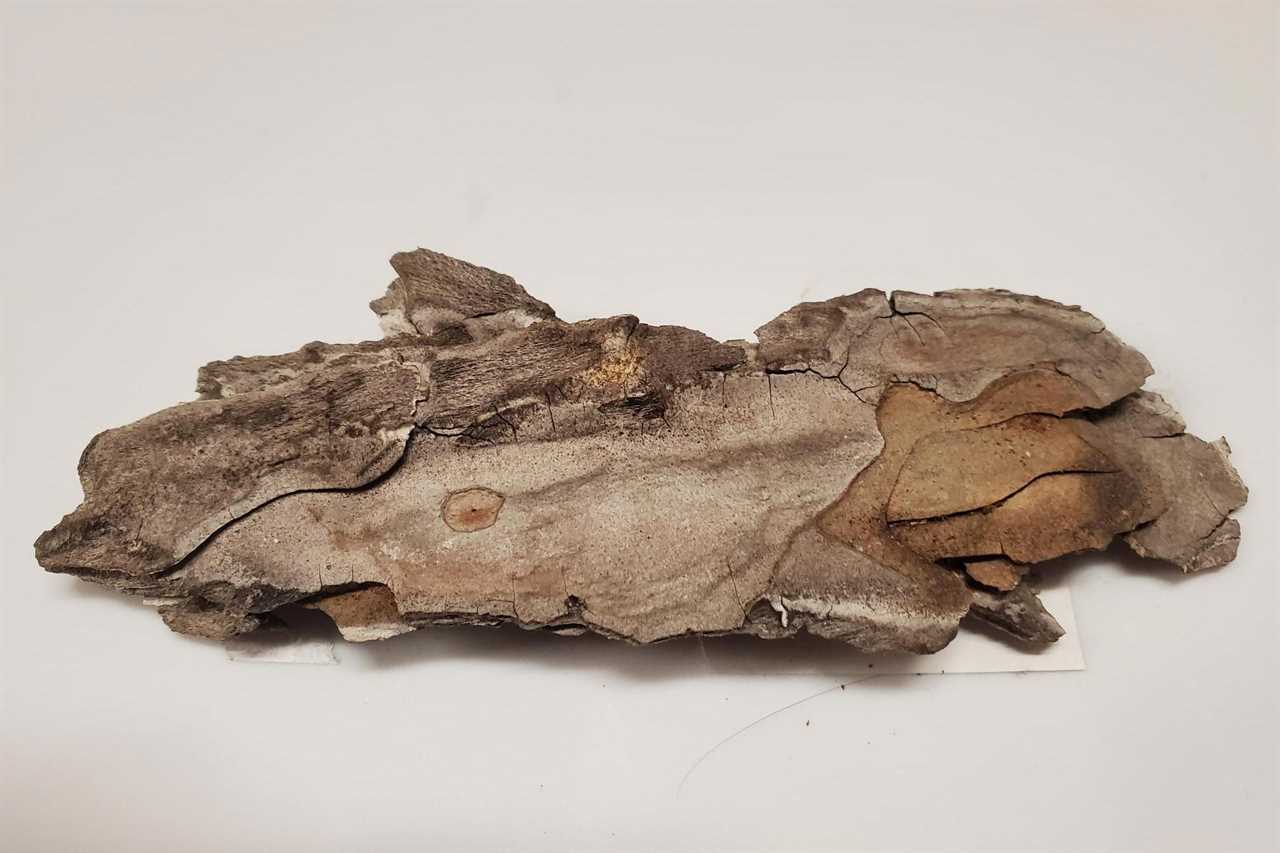For a creature the size of a poppy seed, clover mites can be a big pain in the neck. Fortunately, clover mites don’t bite or harm humans. They don’t carry diseases, damage buildings or eat through your bags of flour and sugar. And they don’t munch holes in clothing, curtains or carpeting, either.
So then why should you care if you have clover mites? Read on.
What Is a Clover Mite?
A clover mite (Bryobia praetiosa Koch) is an arthropod closely related to spiders and ticks.
Ronald Ochoa, Ph.D., a research scientist specializing in mites for the United States Department of Agriculture (USDA), says they believe clover mites have been around for about 500 million years, long before plants even existed. Ochoa says many scientists believe there are probably about 11 million species of mites on the planet.
Extremely adaptable, “praetisoa” (as Ochoa likes to call them) can be found in rural and urban settings. He believes “clover mite” is a misnomer. “They don’t exactly love clover, although they are happy to munch on them in a pinch,” he says. “They much prefer to feed on grasses, weeds, ivy and shade trees to get their water.”
What Do Clover Mites Look Like?
Clover mites are tiny and reddish-brown, with a globe-shaped body and yellowish legs. The first pair of legs, held in front of the body, are much longer than the others.
Difficult to see with the naked eye, these little specks (0.75- to 0.85-mm) are best identified by their deep claret color. Their bright red eggs measure around 0.12-mm!
Outbreaks of clover mites can be confused with a similar teeny bug called the balaustium mite, aka a sidewalk mite. This minuscule doppelgänger exhibits some of the same behaviors and characteristics of clover mites, like body shape and color.
With the aid of a magnifying glass, you might be able to see the differences. The balaustium mite has a velvety body from short hairs all over and grows to 2-mm long, about twice the size of a clover mite. Another distinction: Balaustium mites will not only bite humans, but seek out clover mites as prey!

Thanks to technology, Ochoa says most smartphones can double as hand-held microscopes, some magnifying up to 10X. “Your phone can help you be a bug expert in your own backyard,” he says. If you’re into becoming an amateur entomologist, there are lenses you can buy that clip onto your phone, letting you magnify images 50X, 60X or more.
Where Are Clover Mites Found?
Clover mites are found in almost every corner of the globe, from North and South America to Europe, Asia, Africa and Australia. They do best in moderate climates. Clover mites have trouble surviving really hot temperatures (above 102 degrees), and their eggs go dormant below 65 degrees.
Eggs must be exposed to temperatures above 65 degrees for a minimum of 18 hours to hatch. Mites can survive between 18 to 100 days, depending on the region. And clover mites can produce up to seven generations in a year.
What Are Clover Mites Attracted To?
Clover mites like to live in lawns, especially favoring grasses and other types of herbaceous plants. Clover mites like:
- Clover (naturally!), dandelions, wild strawberries and especially weeds!
- Spring-like, warm temperatures and humidity.
- The sunny side of yards, buildings and walls.
- Heavily fertilized or newer turf.
- Hiding in the protective bark of trees in the winter. In spring, the larvae emerge from the bark to find water.

Are Clover Mites Destructive?
Not devastatingly so. They don’t damage crops, but can cause problems with:
- Turf: A large clover mite population can turn lawns brown. This damage is sometimes mistaken for winter kill.
- Vegetation: To plants, the damage is less significant. Clover mites can injure foliage to the point where it turns yellow or brown and eventually wilts. More often than not, a clover mite’s feeding damage just looks like small silver streaks on the leaves and flower petals.
- Household surfaces: Let’s talk about the stains. When they get inside your home, these itsy-bitsy bugs leave messy red splotches (a red pigment from their body fluids) on painted walls, upholstery, fabrics and carpets.
Clover mites’ saving grace? They don’t reproduce indoors. After several days without water, most will become dehydrated and die.
Do Clover Mites Bite?
No. Their piercing mouth parts bore into the flesh of plants to suck up the nutrient-rich sap, but there’s no way they can break the skin of humans or animals. Even if they could, they wouldn’t want to, because they’re not blood-sucking parasites like bed bugs or mosquitoes.
How To Get Rid of Clover Mites
The most effective way to manage clover mites is to make your yard less hospitable to them.
- Plant trees and flowers clover mites don’t like, such as yews, junipers and spruce, as well peonies, hostas, mums, marigolds, geraniums and ferns.
- Douse clover mites with water from your garden hose.
- For heavy infestations, create a barrier on the ground at the base of your home with a spray pesticide. Be sure it’s labeled for mite control.
Ways to discourage clover mites from entering your house:
- Caulk or put masking tape (a temporary fix) around door and window frames.
- Add or replace weatherstripping around windows and doors.
- Brush oil on window sills and weather-stripping. Mites have trouble crossing the “slick.”
- Create a plant-free zone near foundations, or lay pea gravel or other crushed stone in that area.
- If you live in a frigid climate, Ochoa suggests washing down the lower one or two feet of the exterior of your house in the fall with a garden hose. “This is an especially good idea if your home is prone to infestations,” he says.
Clover mites are so small that some screens won’t stop them. They often find their way inside where it’s warm in the winter months.
If you find them in your house, carefull suck them up with a hand-held vacuum. Do not use a broom; you’ll risk crushing them, which creates stains.
Be sure to take the vacuum outdoors. If it has a collection bag, remove it and dispose in an outdoor trash bin. Clean the vacuum parts with a damp, soapy sponge, and dry everything thoroughly before bringing it back inside.
Did you miss our previous article...
https://rsssuperfeeds.com/life-hacks/guide-to-water-storage-tanks






